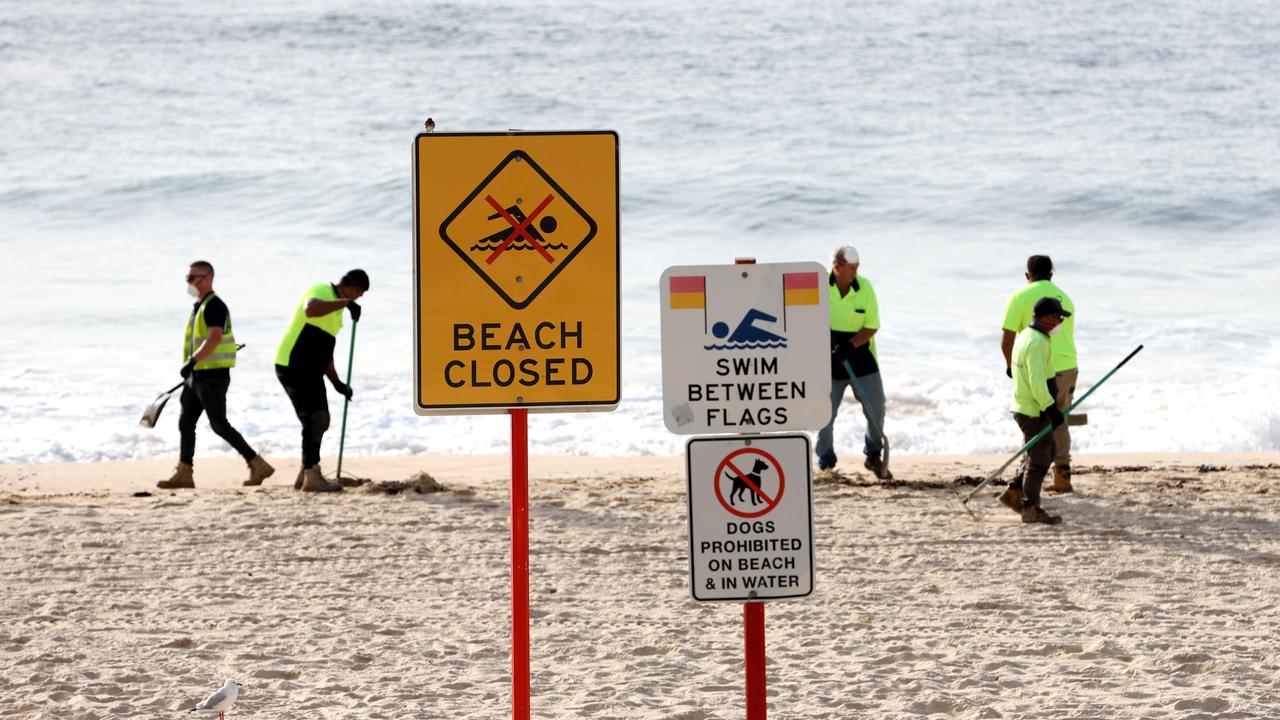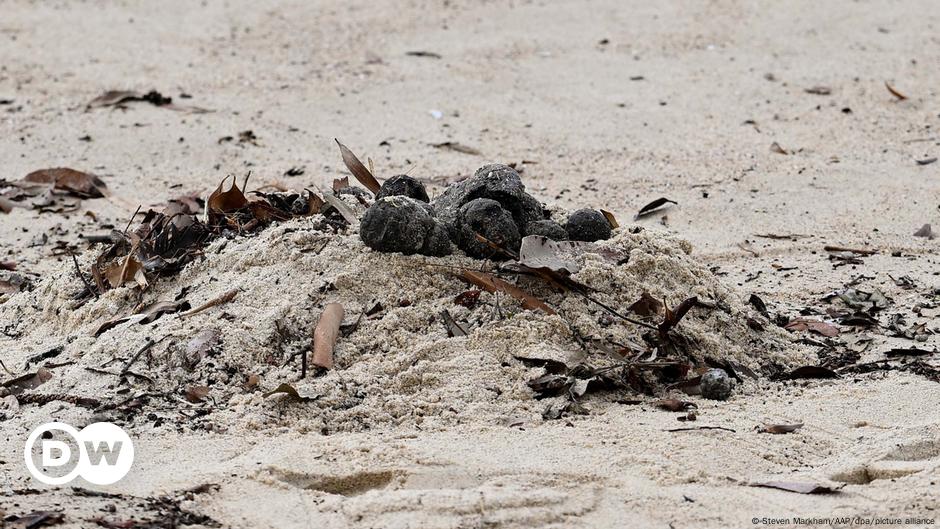As of the latest Sydney Mysterious Black Balls news, Sydney’s Coogee and Gordons Bay beaches were closed after thousands of mysterious, spherical black balls washed up along the shores. These balls were suspected to be tar balls.

Also Read: Hong Kong Zoo News: Investigation Underway After 9 Monkeys Die in 2 Days
As of the latest Sydney Mysterious Black Balls news, the black, ball-shaped debris appeared on Coogee Beach on Tuesday afternoon, October 15, 2024. Thousands of these round objects washed up along the shoreline.
The balls were also found at Gordons Bay, an aquatic reserve popular for snorkeling, which has also been closed.
Preliminary testing by Randwick City Council confirmed the balls as tar balls, a hydrocarbon-based pollutant. Hydrocarbons, the primary component of tar balls are typically found in petroleum-based products.
These substances can be harmful and are potentially carcinogenic, making it essential to keep the public away from the contaminated areas.
The tar balls are golf-ball to cricket-ball sized and are formed when crude oil or similar pollutants mix with seawater and debris.
As of the latest Sydney Mysterious Black Balls news, experts believe that the tar balls could be the result of a ship-based oil spill or seepage into the ocean. There is no evidence yet of a large-scale oil spill, but authorities are investigating whether the contamination originated from a small-scale spill or another form of oil leakage.
The round, smooth nature of the tar balls suggests they have been in the ocean for weeks or even months, continuously being buffeted by waves before reaching Sydney’s shores.
Coogee Beach along with nearby Gordons Bay remains closed until further notice. Council lifeguards have also observed tar balls floating near Wedding Cake Island, offshore from Coogee Beach, indicating the spread of the contamination.
Mayor Dylan Parker has addressed the need for patience and cooperation from the public as workers continue the cleanup process.
Tar balls pose risks to both human health and marine life. Marine biologists such as Lawrence Chlebeck from Humane Society International, have warned that touching these black tar-like balls could be akin to immersing oneself in crude oil.
Swimmers and beachgoers have been strongly advised to avoid the area until the cleanup is complete, as direct contact with the tar balls could lead to skin irritation or even longer-term health risks.
Randwick City Council has engaged specialist contractors and an expert occupational hygienist to oversee the cleanup.
Workers are following a strict, safe work method statement, developed in coordination with the NSW Environment Protection Authority to ensure the debris is removed safely and without environmental damage.
As of the latest Sydney Mysterious Black Balls news, the cleanup is expected to last several days, with updates from local authorities expected by the end of the week.
Authorities are still trying to determine the exact source of the tar balls. While tar balls are often associated with oil spills, the localized nature of the contamination at Coogee Beach and Gordons Bay suggests a more complex interplay of ocean currents.
The tar balls’ appearance at only these two beaches and not at Bondi or other nearby locations.
Residents have largely complied with warnings to stay off the beach, but lifeguards continue to monitor the areas to prevent any unauthorized entry.
As of the latest Sydney Mysterious Black Balls news, Local officials are working closely with the NSW EPA, Beach Watch NSW and other relevant bodies to assess when the beaches will be safe to reopen.
Also Read: Sahara Desert Flooded for First Time in 50 Years After Rare Rainfall
Tests carried out by local authorities including the New South Wales Environment Protection Authority revealed that these black spheres were hydrocarbon-based pollutants. This is consistent with the typical makeup of tar balls.
What puzzled experts was the uniform shape and size of the balls, as well as the large number found in a small, localized area. This pointed to the likelihood that the source of pollution might be close to Sydney, but no oil spills had been reported by vessels in the vicinity.
According to Dr. Sharon Hook, a CSIRO research scientist, the sudden appearance of hundreds of uniform tar balls is an unusual phenomenon.
While tar balls often wash up on shores after spills such a massive and uniform deposit in a confined area is rare.
Coogee beach is part of a sensitive marine ecosystem that includes various shark species and is a migration route for humpback whales. Tar balls can pose a threat to marine life.
The hydrocarbons in tar balls are toxic to marine organisms. If fish or other sea creatures ingest the tar balls, it can block their digestive systems leading to malnutrition or death.
Tar can stick to marine animals including birds, turtles and fish. Similar to oil spill disasters, tar-coated animals lose their ability to regulate body temperature, which can lead to fatal outcomes.
Tar balls are persistent pollutants. Since they are made from petroleum and often mixed with plastics, they can remain in the marine environment for decades.
As of the latest Sydney Mysterious Black Balls news, the decision by Randwick Council to close Coogee and Gordons Bay beaches was made swiftly to prevent any harm to beachgoers.
Tar balls contain carcinogenic chemicals, which pose a serious health risk especially to children who might play in the sand near these pollutants.
Coming into direct contact with tar balls can lead to skin irritation and in severe cases, exposure could increase the risk of cancer due to the toxic compounds they contain.
Authorities have warned the public to avoid the beaches until they are thoroughly cleaned and the pollutants are removed.
Tar balls are hardened blobs of petroleum that have floated through the ocean, collecting debris and pollutants. These balls form when petroleum often spilled from oil rigs or ships, comes into contact with water and debris.
As of the latest Sydney Mysterious Black Balls news, the sticky substance attaches itself to various materials, condensing and coagulating into spherical shapes.
Some tar balls occur naturally due to oil seepage from the ocean floor, while others are a direct result of oil spills.
While they can range in size, the Sydney mysterious black balls are unusual in their uniform, round shape and relatively large size, ranging from golf balls to cricket balls.
Also Read: 73% Decline in Global Wildlife Populations Over 50 Years




